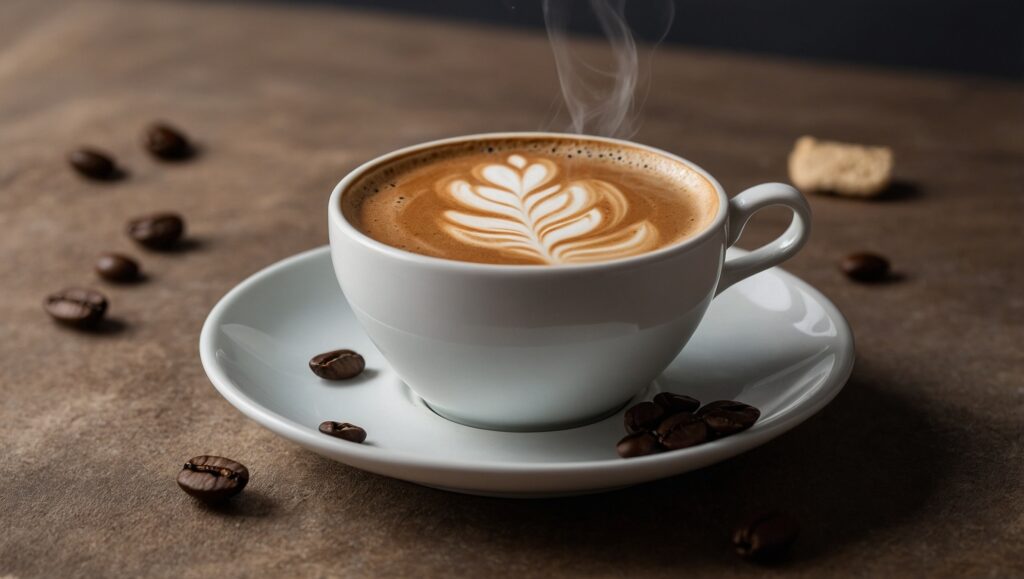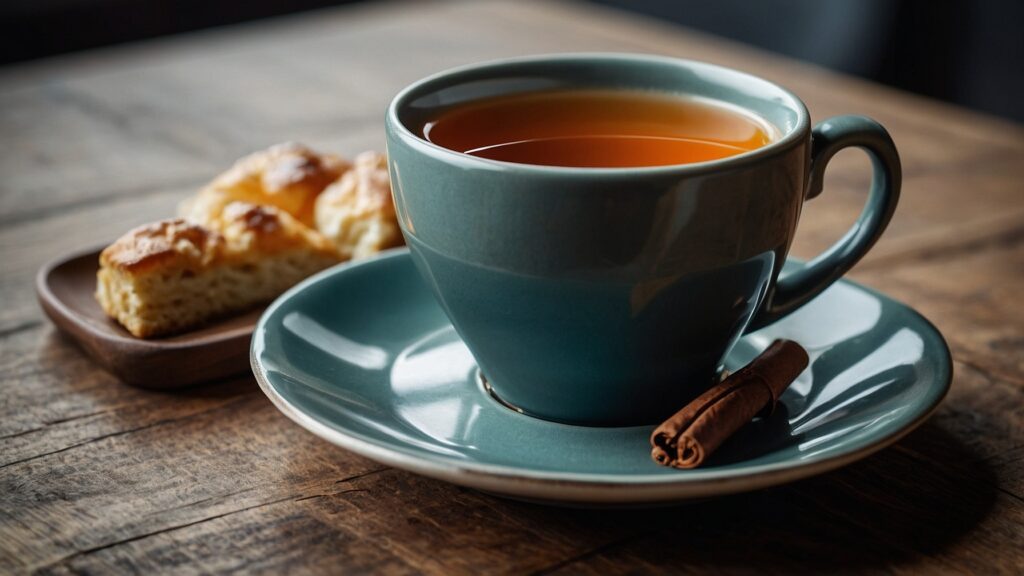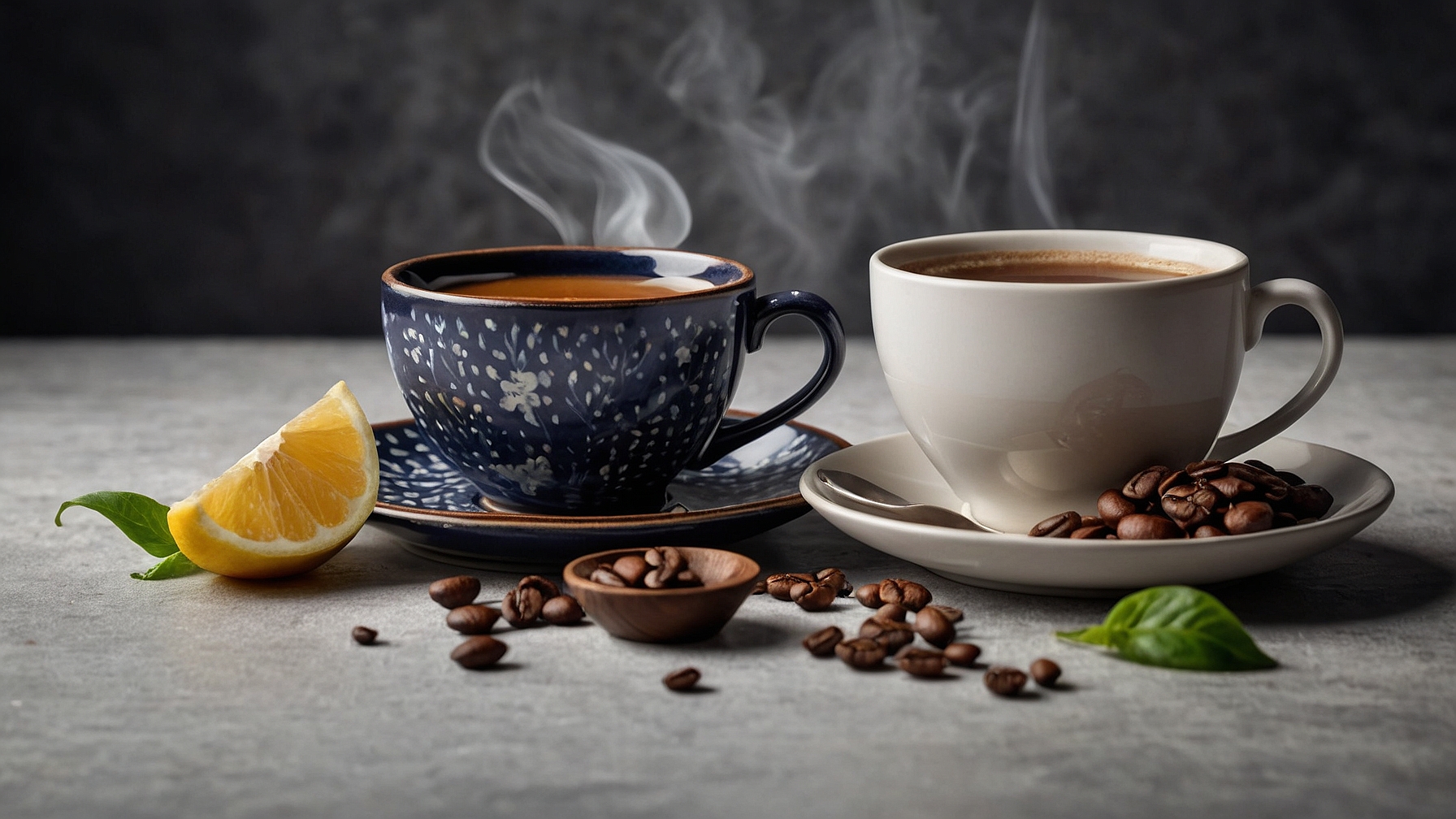The world of beverages is vast and diverse. Among them, coffee and tea hold a special place.
Both coffee and tea have a rich history. They have been consumed for centuries across different cultures.
Each offers a unique array of flavors, which are influenced by various factors such as origin, processing methods, and brewing techniques.
But which has more flavors, coffee or tea? This question sparks curiosity among enthusiasts and casual drinkers alike.
In this article, we delve into the flavors of coffee and tea. We explore their complexities and the factors that contribute to their taste profiles.
Join us on this flavorful journey. Let’s discover if coffee or tea offers a broader spectrum of flavors.
Table of Contents
ToggleThe Rich Tapestry of Coffee Flavors
Coffee flavors are a delightful enigma. The diversity stems from a blend of environmental and human influences.
A coffee bean’s journey from farm to cup is intricate. Each step impacts its flavor profile. The transformation begins with the plant’s variety and continues through the processing, roasting, and brewing stages.
Different regions produce distinct coffee flavors. For example, Ethiopian coffee is often fruity, while Colombian coffee might boast nutty notes.
The interaction of soil, climate, and altitude plays a significant role. These elements create unique terroirs that contribute to coffee’s flavor diversity.
Moreover, the genetic makeup of coffee species matters. Arabica and Robusta beans offer different taste experiences. Arabica is usually smooth and acidic, while Robusta is bolder.
With these rich combinations, coffee offers an almost endless array of flavors. Each cup delivers its own story and sensory experience.

Origins and Varieties: The Roots of Coffee’s Flavor
The birth of coffee flavor begins at its origin. The plant’s environment determines much of its taste characteristics.
Ethiopian coffee is often vibrant with floral notes. This contrasts with Brazilian coffee, which might be chocolatey and nutty.
Coffee plants themselves come in various species. The two main ones are Arabica and Robusta. Arabica tends to be sweeter and more aromatic, while Robusta offers a bold, earthy flavor.
Besides species, coffee varieties also impact taste. Different plant strains within these species further broaden coffee’s spectrum. Varieties like Bourbon or Geisha have distinct profiles. The interplay between variety and origin brings a vast array of flavors to light.
Roasting and Brewing: Crafting the Coffee Experience
Roasting is an art as well as a science. It unlocks the potential flavors hidden within green coffee beans.
Light roasts tend to preserve the bean’s original characteristics. These roasts are often fruity and acidic. Medium roasts strike a balance between fruity notes and deeper caramel tones.
Dark roasts develop robust, smoky flavors. During roasting, heat transforms sugars and acids, enhancing or mellowing certain flavors.
Brewing, too, is a critical stage in flavor extraction. Methods like espresso, drip, or French press each highlight different aspects of the coffee’s taste.
Brewing variables, such as temperature and grind size, are crucial. They can drastically alter the cup’s profile. The nuances of roasting and brewing together define the coffee experience.
The Sensory Journey of Coffee Tasting
Coffee tasting is a sensory adventure. It engages taste buds and evokes the aromatic world within each cup.
The process of tasting coffee, known as cupping, is meticulous. It focuses on identifying flavor notes such as fruity, nutty, or floral.
Acidity, body, and aroma are key components assessed during tasting. Acidity refers to the brightness or sharpness felt on the palate. A coffee’s body describes its weight or thickness on the tongue.
Aroma complements flavor, enhancing the tasting experience with its complex scents. Notes of berries, chocolate, or citrus can fill the air.
Each sip offers a balance of these sensory elements. The sensory journey provides an appreciation for the depth of coffee flavors, promoting a deeper understanding and enjoyment of every cup.
The Diverse World of Tea Flavors
Tea offers a vast palette of flavors. Its journey from leaf to cup reveals complexity akin to coffee.
The diversity of tea flavors can be attributed to the type of tea and the unique processing methods. Black, green, oolong, white, and pu-erh teas each present distinct taste profiles.
The region where tea is grown plays a pivotal role. For instance, Darjeeling tea is celebrated for its muscatel flavor. In contrast, Matcha from Japan is renowned for its sweet, umami-rich taste.
Climate and soil conditions contribute uniquely to a tea’s flavor. These environmental factors shape the subtle nuances that distinguish each variety.
The art of blending also expands tea’s flavor range. Blends can combine various teas or infuse fruits, flowers, and spices, creating even more flavor possibilities.
Thus, the world of tea is a rich tapestry of tastes, inviting exploration and appreciation.

From Leaf to Cup: The Story of Tea’s Flavor
Tea’s flavor journey begins with the leaf, specifically its type. The most common types include black, green, oolong, white, and pu-erh. Each offers distinct characteristics.
The processing method heavily influences a tea’s final flavor. For instance, black tea undergoes full oxidation. This process develops its bold, robust taste. Green tea, however, is minimally processed. It retains its fresh, grassy notes.
The timing of the harvest can also impact flavor. Leaves picked in early spring are often more delicate and aromatic.
The story of tea’s flavor is deeply entwined with its origin. Different regions impart unique characteristics, shaped by local culture and tradition.
The Art of Tea Processing and Brewing
Tea processing is a meticulous craft. It involves several stages, including withering, rolling, oxidation, and drying. Each step alters the leaves’ chemical composition, influencing flavor.
Oxidation is a critical process. It contributes significantly to the taste and color of tea. Controlled oxidation produces the variety of flavors seen across tea types.
Brewing methods further enhance tea’s flavor profile. The choice of water temperature, steeping time, and tea-to-water ratio all play vital roles.
Different brewing techniques accentuate various flavors. For example, Gongfu brewing often brings out the rich notes in oolong teas.
Understanding and mastering these processes can greatly enhance the tea-drinking experience.
Tea Tasting: A Symphony of Aromas and Tastes
Tea tasting is both art and science, mirroring coffee’s tasting ritual. It focuses on unlocking the intricate flavors and aromas within each cup.
Each tea type offers a unique sensory journey. Black teas may exhibit flavors ranging from malty to fruity. Meanwhile, green teas can vary from nutty to sweet.
Aroma plays a critical role in tea tasting. It enhances flavor perception, evoking floral, woody, or earthy scents.
Professional tea tasting involves assessing key attributes such as astringency, body, and flavor complexity. Astringency often provides a pleasant briskness, adding to the refreshment of the tea.
The objective is to identify and appreciate the harmonious blend of flavors and aromas. This exploration offers a deeper understanding and enjoyment of tea’s rich diversity.
Comparing the Flavors: Coffee vs Tea
When comparing coffee and tea, the diversity of flavors stands out. Both beverages have rich histories that influence their flavor profiles.
Coffee boasts a range of flavors like chocolate, citrus, and berry. These flavors stem from bean variety, origin, and roasting techniques.
Tea offers an equally broad spectrum, from floral and sweet to earthy and smoky. These are shaped by the type and processing of the tea leaves.
Each beverage’s preparation method further diversifies flavors. For coffee, brewing impacts strength and taste. In tea, brewing emphasizes different flavor notes.
While both offer myriad flavors, the balance of aroma, taste, and sensation differ, creating unique experiences. Each sip invites a journey into the heart of the beverage’s origins and craft.
The Influence of Culture and Tradition
Culture and tradition profoundly influence the flavor of both coffee and tea. Each region adds its own local touch, enriching the experience.
In many countries, coffee rituals are embedded in social customs. For instance, Turkish coffee is known for its robust, thick brew, shared as a gesture of hospitality.
Tea traditions are equally diverse. In Japan, the tea ceremony prioritizes Matcha’s refined, umami taste within a ritualized setting.
These practices elevate both coffee and tea beyond mere beverages. They become symbols of identity, history, and community.
Health Benefits and Flavor Profiles
The health benefits of coffee and tea complement their diverse flavor profiles. Both beverages offer antioxidants, though their effects vary.
Coffee is rich in caffeine, providing a stimulating experience. Many studies highlight its potential to boost mental alertness.
Tea, especially green and white varieties, boasts high catechin levels. These compounds are associated with improved heart health and reduced inflammation.
The flavor nuances of each drink also enhance the sensory pleasure, making each cup not just a healthful choice, but a delightful one.
Enjoying coffee or tea can be a holistic experience, balancing well-being with flavor appreciation.
The Role of Additives and Pairings
Additives and pairings can significantly alter the flavor landscape of coffee and tea. They offer new dimensions to explore.
In coffee, milk, sugar, and spices can transform a simple brew. Think of a creamy latte or a spicy chai coffee.
Tea also lends itself to additives. Milk enhances black tea’s richness while honey complements herbal blends.
Pairings with food further enrich these beverages. Coffee accompanies desserts, enhancing their sweetness. Tea pairs beautifully with pastries, cutting through richness.
These enhancements create a versatile canvas. They invite a personalized approach, where each combination offers a unique taste experience, reflecting individual preferences.
The Verdict: Which Has More Flavors?
Determining whether coffee or tea has more flavors isn’t straightforward. Both possess extensive flavor profiles shaped by a myriad of factors.
Coffee’s flavors stem from its bean variety, terroir, and roasting process. Tea, however, derives its breadth from the type of leaf, oxidation level, and regional methods.
Ultimately, both offer a rich tapestry of tastes and experiences. The diversity within each beverage invites exploration and personal discovery. There’s no simple answer, as both offer abundant delights for any palate.
Expert Opinions and Consumer Trends
Experts often highlight the complexity found in both coffee and tea. Each offers numerous flavors, though preferences vary by person and culture.
Consumer trends show a growing interest in unique and exotic flavors. Specialty markets are expanding, featuring rare coffee beans and distinct tea blends.
These trends reflect a curiosity for more authentic and diverse experiences. People are seeking not just beverages but stories and journeys in every cup. This shift drives both industries towards further innovation.
The Future of Coffee and Tea Flavors
The future of coffee and tea flavors promises even more diversity. Innovations in brewing techniques and agricultural practices continue to expand possibilities.
Sustainability and ethical sourcing are shaping flavor development. Producers are focusing on quality while respecting environmental practices.
As palates evolve, the quest for new flavors will drive creativity. The ever-changing landscape suggests exciting developments, as both beverages evolve to meet a global demand for novelty. This positions them as not just beverages but key players in cultural and culinary landscapes worldwide.
Conclusion: An Invitation to Explore
Both coffee and tea offer incredible flavor adventures. Each cup is an opportunity to explore a spectrum of tastes.
Embrace the complexity and dive into the depths of these beverages. Discover the unique characteristics that make each sip special.
Your Personal Journey with Coffee and Tea
Embark on a personal flavor journey with coffee and tea. Experiment with different varieties and brewing methods.
Taste and savor the nuances that each has to offer. Let curiosity guide you to new favorite flavors and experiences.






